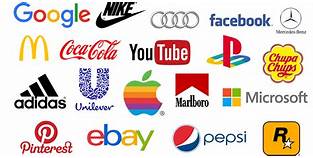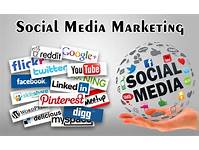- The Importance of Branding for Small Businesses
- Factors to Consider When Determining Branding Costs
- Budget-friendly Branding Options for Small Businesses
- 1. Social Media Marketing
- 2. DIY Design
- 3. Collaborations and Partnerships
- Investing in Branding: Long-term Benefits for Small Businesses
- The Cost of Branding for Small Businesses
- The Long-term Benefits of Investing in Branding
- Tips for Maximizing the Impact of Your Branding Efforts on a Limited Budget
- 1. Identify Your Business Goals and Target Audience
- 2. Create a Unique Brand Name and Logo
- 3. Utilize Social Media Platforms to Boost Your Branding Efforts
- 4. Partner With Influencers to Promote Your Brand
- 5. Focus on Creating Valuable Content
The Importance of Branding for Small Businesses
Branding is an important aspect of any business, but it is especially important for small businesses. Branding involves creating a unique identity for your business that sets it apart from competitors. This can include your company name, logo, tagline, and overall style. Branding is important because it can help establish your business in the minds of your customers, build trust and loyalty, and set your prices apart from competitors.
Many small businesses overlook the importance of branding and focus solely on their products or services. However, strong branding can help set your business apart from competitors and create a strong image that customers will associate with your brand. This can be especially important in industries where there are many similar products or services available.
So, how much does branding cost for small businesses? There is no one-size-fits-all answer to this question, as the cost of branding will depend on a variety of factors, including the complexity of the branding strategy, the extent of the branding materials needed, and the time and resources required to implement the plan. However, there are a few key steps that small businesses can take to keep branding costs manageable.
First, it is important to have a clear understanding of your target audience and what they are looking for in a brand. This can help you create a branding strategy that resonates with your audience without going over budget. Additionally, it is important to focus on the most important elements of your brand, such as your logo, tagline, and overall style. By prioritizing these elements, you can create a strong brand identity without breaking the bank.
Another factor that affects the cost of branding is the level of customization needed. Customized branding materials, such as a unique logo or website design, can be more expensive than pre-made templates or designs. However, customized materials can also be more effective in creating a strong brand identity. When considering branding options, it is important to balance customization with cost, and to choose options that best suit your business and budget.
Finally, it is important to remember that branding is an ongoing process. While creating a strong brand identity may require an initial investment of time and resources, ongoing efforts to maintain and build upon that identity are necessary for long-term success. This can include regular updates to branding materials, consistent messaging and promotions, and ongoing efforts to engage with customers and build brand loyalty.
In conclusion, branding is an essential part of any small business’s success, helping to establish a unique identity in the minds of customers and build trust and loyalty. While the cost of branding will vary depending on the business and its needs, there are ways to keep costs manageable while still creating a strong brand identity. By focusing on the most important elements of your brand, balancing customization with cost, and committing to ongoing efforts to maintain and build upon your brand, small businesses can establish a successful and memorable brand identity that sets them apart from competitors.
Factors to Consider When Determining Branding Costs
Branding cost is an essential factor to consider when establishing a company or growing an existing one. A great branding effort helps establish a business’s identity, allowing it to stand out in a crowded marketplace. However, this process can be costly, and small companies may discover it hard to devote significant amounts of money to it. Therefore, it’s essential to understand the factors that influence branding expenses. This article will define the factors that influence branding cost and give some ways to remain within budget while developing an efficient brand.
1. Purpose of the Brand
Before beginning the branding process, you must have a clear conception of why you’re doing it. It’s critical to know what your brand stands for and how it differs from your competitors. This will determine the direction you take throughout the branding process, from logo design to brand guidelines. This will also have a significant influence on the cost of building your brand. The more extensive your brand identity is, the more resources and money it will require.
2. Initial Costs for Brand Development
One of the most crucial considerations when determining branding costs is the first expense of designing and developing the brand. It is crucial to devote enough time to design a brand that accurately represents your business’s values, personality, and message. The expense will be determined by the number, variety, and intricacy of visual elements employed in this process.
Logo Design – Your logo is the visual representation of your brand, symbolizing everything your company stands for. Designing a logo might take time and require the assistance of a professional graphic designer. For a business logo design that accurately reflects your brand and appeals to your target audience, expect to pay up to $5,000.
Brand Guidelines – These are the rules that dictate how your brand is communicated to the world. A brand guideline contains all of the visual and written elements that make up your brand and ensures that it is displayed consistently across various platforms. A complete brand guideline should cost between $3,000 and $5,000, depending on the brand’s complexity and the level of detail required.
Marketing Collateral – Marketing collateral refers to the printed and digital materials employed to promote your brand. This incorporates everything from business cards to flyers, social media graphics to your website’s design. Depending on the complexity of the components, designing marketing collateral might cost between $1,000 and $10,000.
Website Design – Your website is frequently the first interaction that potential clients have with your brand. It should be both appealing and engaging, with a strong emphasis on functionality. A responsive website design that showcases your brand might cost between $10,000 and $20,000.
In summary, the cost of branding your small business depends on the branding’s purpose and the initial costs needed to develop your brand. It’s vital to remember that branding isn’t a one-time expense. Your brand will grow over time, and as it does, you’ll need to set aside money to maintain and update it. Knowing what factors influence branding costs will help you build a brand that will stand the test of time.
Budget-friendly Branding Options for Small Businesses
If you’re a small business owner, you know how important it is to have a strong brand. Your brand is how customers will remember you and differentiate you from your competitors. However, branding can be expensive and most small businesses don’t have an unlimited budget to spend on it. Luckily, there are budget-friendly branding options for small businesses that can be just as effective as more costly options. Here are three budget-friendly branding options:
1. Social Media Marketing
One of the most cost-effective branding options for small businesses is social media marketing. With over 3.6 billion people using social media worldwide, it’s no surprise that businesses are turning to social media to reach their target audience. Social media platforms like Facebook, Instagram, Twitter, and LinkedIn offer free business pages where you can showcase your brand and interact with customers. You can also run paid social media ads and target a specific audience based on factors like age, gender, interests, and location, all while staying within your budget. Social media marketing is not only cost-effective but also a great way to build brand awareness and engage with your audience.
2. DIY Design
If you don’t have the budget to hire a professional graphic designer, you can always try DIY design. There are many free and low-cost design tools available that can help you create your own logo, business cards, and other branding materials. Canva, for example, is a free graphic design tool that offers customizable templates and design elements. With Canva, you can create professional-looking designs in just a few clicks. DIY design is not only budget-friendly but also gives you more creative control over your brand.
3. Collaborations and Partnerships
Collaborating with other businesses or influencers can be a great way to build brand awareness and reach a wider audience. Collaboration can come in many forms, such as hosting a joint event, partnering on a social media campaign, or even co-creating a product. By partnering with like-minded businesses or influencers, you can tap into their existing audience and gain exposure for your brand. The best part about collaborations and partnerships is that they don’t have to cost a lot of money. You can offer a trade of services or products, or simply split costs to stay within your budget.
In conclusion, branding is essential for small businesses, but it doesn’t have to cost a fortune. Use these budget-friendly branding options to build a strong brand without breaking the bank. With social media marketing, DIY design, and collaborations and partnerships, you can create a brand that resonates with your audience and sets you apart from your competitors.
Investing in Branding: Long-term Benefits for Small Businesses
For small businesses, branding is a crucial part of their marketing strategy. Investing in branding helps a small business to create a strong and recognizable brand that attracts and retains customers. A brand is not just a logo, slogan, or tagline, but it is everything that a business does to identify itself and distinguish itself from competitors. In this article, we will discuss how much branding costs for small businesses and the long-term benefits of investing in branding.
The Cost of Branding for Small Businesses
Branding costs for small businesses vary depending on various factors, such as the size of the business, the complexity of the branding project, and the scope of the branding work required. A small business can spend anything from a few hundred dollars to many thousands of dollars on branding costs. However, there are some essential branding expenses that a small business should budget for:
- Logo Design: A logo is the most recognizable aspect of any brand. A professional logo design can cost a small business from $500 to $5,000 and beyond, depending on its design complexity and the experience of the designer.
- Website Design: A website is an essential component of branding for small businesses. A website design can cost from $500 to $50,000, depending on the website’s complexity, functionality, and level of customization required.
- Marketing Collateral: Small businesses need various marketing materials such as business cards, flyers, brochures, and social media graphics. The cost of marketing collateral can range from $500 to $10,000, depending on the quantity, print quality, and design complexity.
- Brand Strategy and Research: Developing a solid brand strategy that includes a clear brand voice, tone, and messaging takes time and expertise. A brand strategy can cost a small business from $1,500 to $10,000, depending on the scope of the work.
The Long-term Benefits of Investing in Branding
Investing in branding is a long-term commitment that yields significant benefits in the long run. Here are some of the long-term benefits of investing in branding:
- Brand Recognition and Awareness: Investing in branding helps create a strong and consistent brand that customers can easily recognize and remember. A well-branded business is more likely to be remembered and referred to others.
- Brand Loyalty and Trust: A strong brand that aligns with its customers’ values creates a sense of loyalty and trust between the brand and its customers. Consumers are more likely to do business with a brand that they know, like, and trust.
- Increased Credibility and Professionalism: A professional and consistent brand makes a small business look more credible and professional. A well-branded business is more likely to be taken seriously by potential customers and partners.
- Competitive Edge: In a crowded market, branding can help a small business stand out from its competitors. A unique and memorable brand can attract new customers and help build a loyal customer base.
- Higher Perceived Value and Premium Pricing: A strong brand that has a reputation for quality and reliability can charge premium pricing for its products or services. Consumers are willing to pay more for a brand they perceive to have higher value.
Investing in branding is an essential step for small businesses looking to build a strong brand reputation and stand out from the competition. While branding costs for small businesses can vary widely, it is important to view branding expenses as a long-term investment in the business’s success. A well-branded business is more likely to attract and retain customers, increase sales and revenue, and build a strong brand reputation that lasts for years to come.
Tips for Maximizing the Impact of Your Branding Efforts on a Limited Budget

Branding is a vital element of any small business. It can be considered as the foundation of a company’s marketing strategy. However, it can be a costly venture. Nonetheless, there are several tips that you can employ to ensure that you can get the most out of your branding efforts without breaking the bank:
1. Identify Your Business Goals and Target Audience

It is essential to ensure that your branding efforts align with your business goals and target audience. Identifying these factors will help you develop a more specific brand that resonates with your target market. This knowledge is vital as it will ensure that you tailor your branding efforts based on your target audience’s likes, needs, and preferences, ensuring that you create the maximum impact.
2. Create a Unique Brand Name and Logo

A great way to stand out in a crowded market is to have a unique brand name and logo. Ensure that your brand name is easy to spell and unique to avoid confusion with other established brands. Your logo should match your brand name and be visually appealing to create an emotional connection with your target audience. You can create your logo using online tools such as Canva and Tailor Brands, or seek a professional designer to create one for you if it is within your budget.
3. Utilize Social Media Platforms to Boost Your Branding Efforts

Social media is an affordable and powerful tool that small businesses can leverage to boost their branding efforts. Utilize social platforms such as Twitter, Facebook, and Instagram to create brand awareness, attract followers, and interact with your target audience. These platforms can help you create brand loyalty and engagement with your clients, which can ultimately improve your sales.
4. Partner With Influencers to Promote Your Brand

Influencer marketing has grown in popularity in recent years and can be an efficient way of promoting your brand on a limited budget. Partner with influencers within your niche, who will help you reach a broader audience. You can also use online platforms such as Upfluence, Grin, and AspireIQ, which connect businesses with relevant influencers.
5. Focus on Creating Valuable Content

Building a brand on a limited budget requires you to create valuable content that offers value to your target audience. Ensure that your content is informative, engaging, and shareable. Producing high-quality content via your blog, social media, and other platforms will help enhance your brand’s thought leadership status and create an emotional connection with your audience.
Creating an effective brand requires a well-planned strategy that requires time, effort, and financial commitments. However, by utilizing effective tips and tools, you can create a compelling brand on a limited budget and create the maximum impact for your small business.


